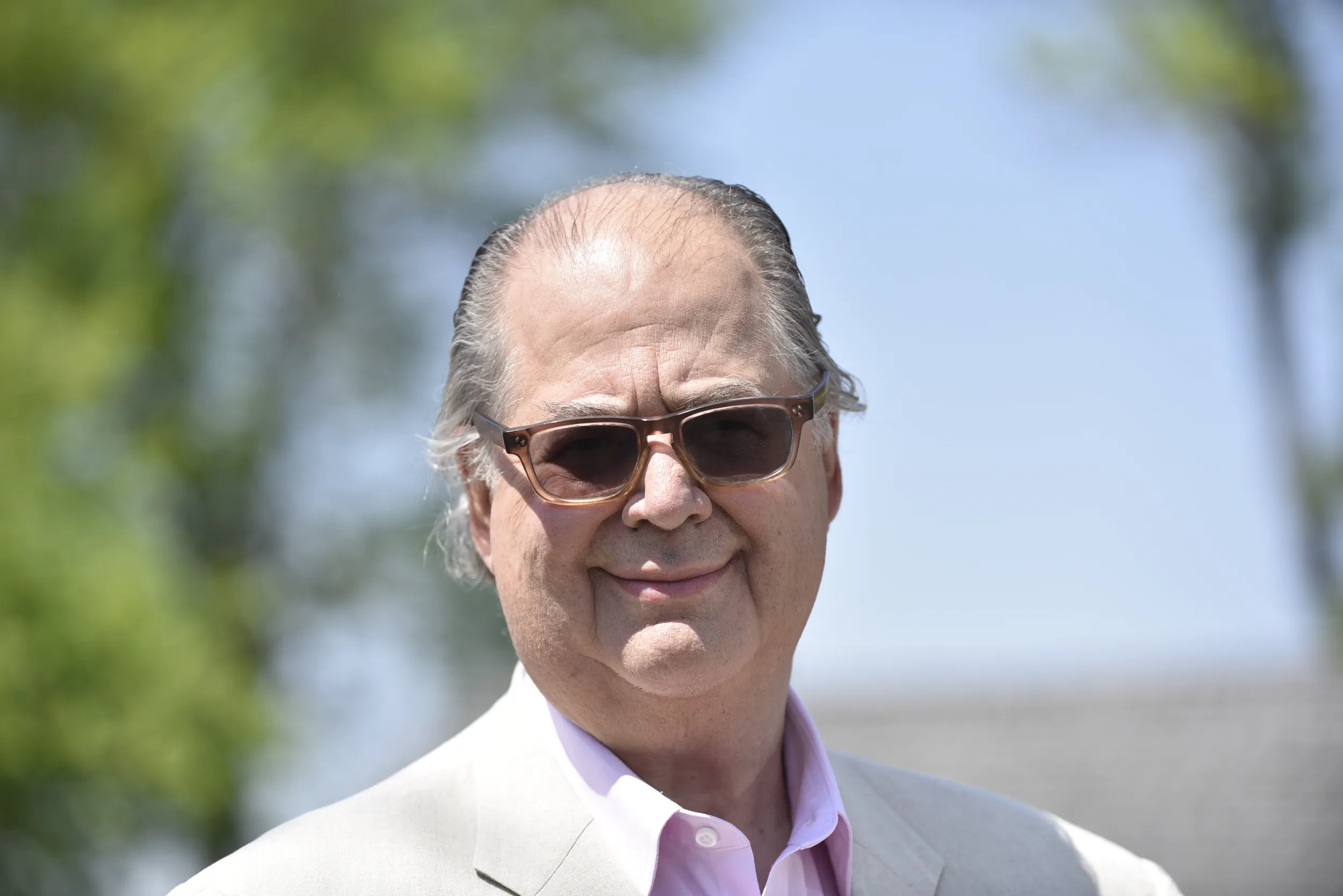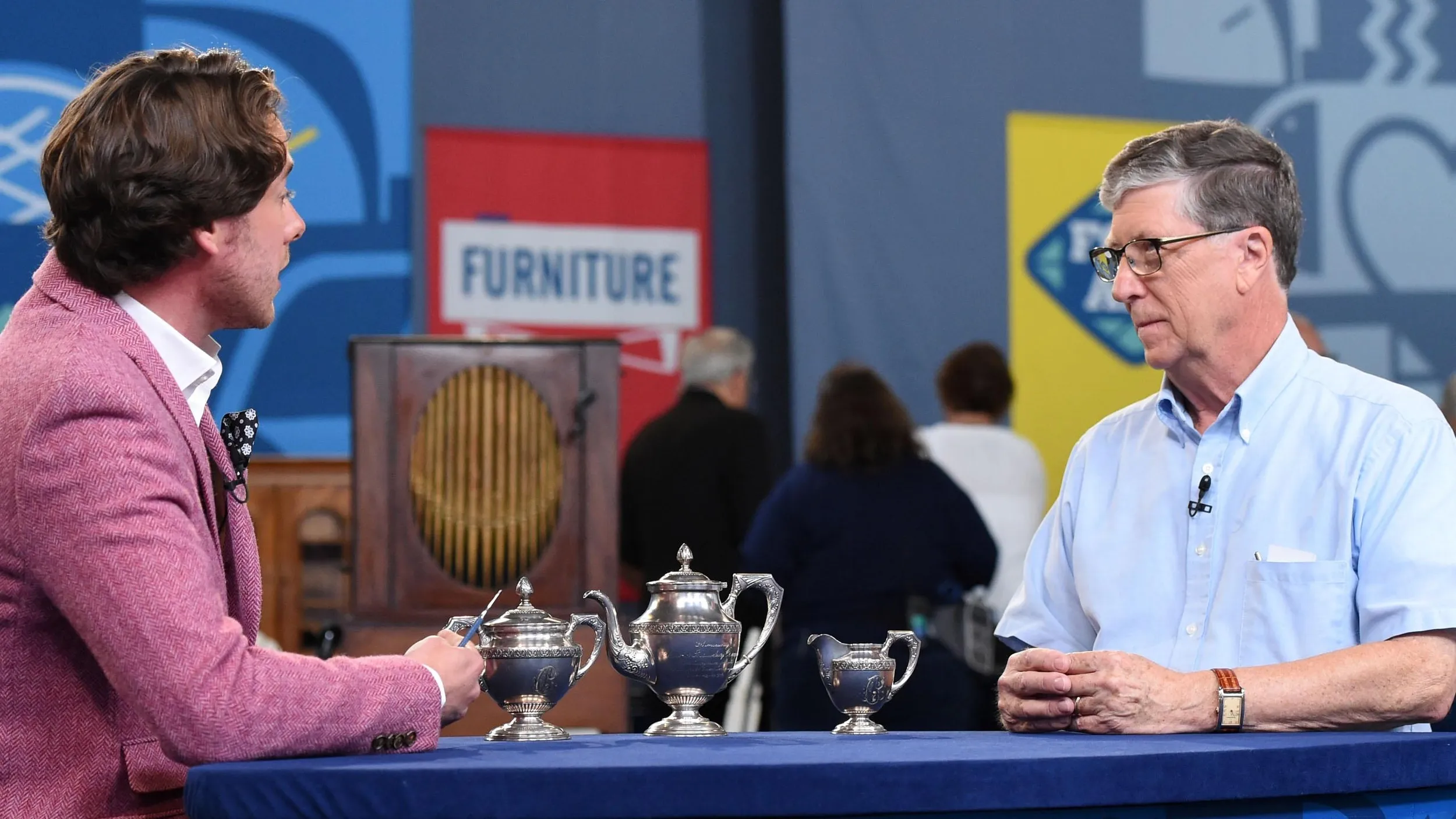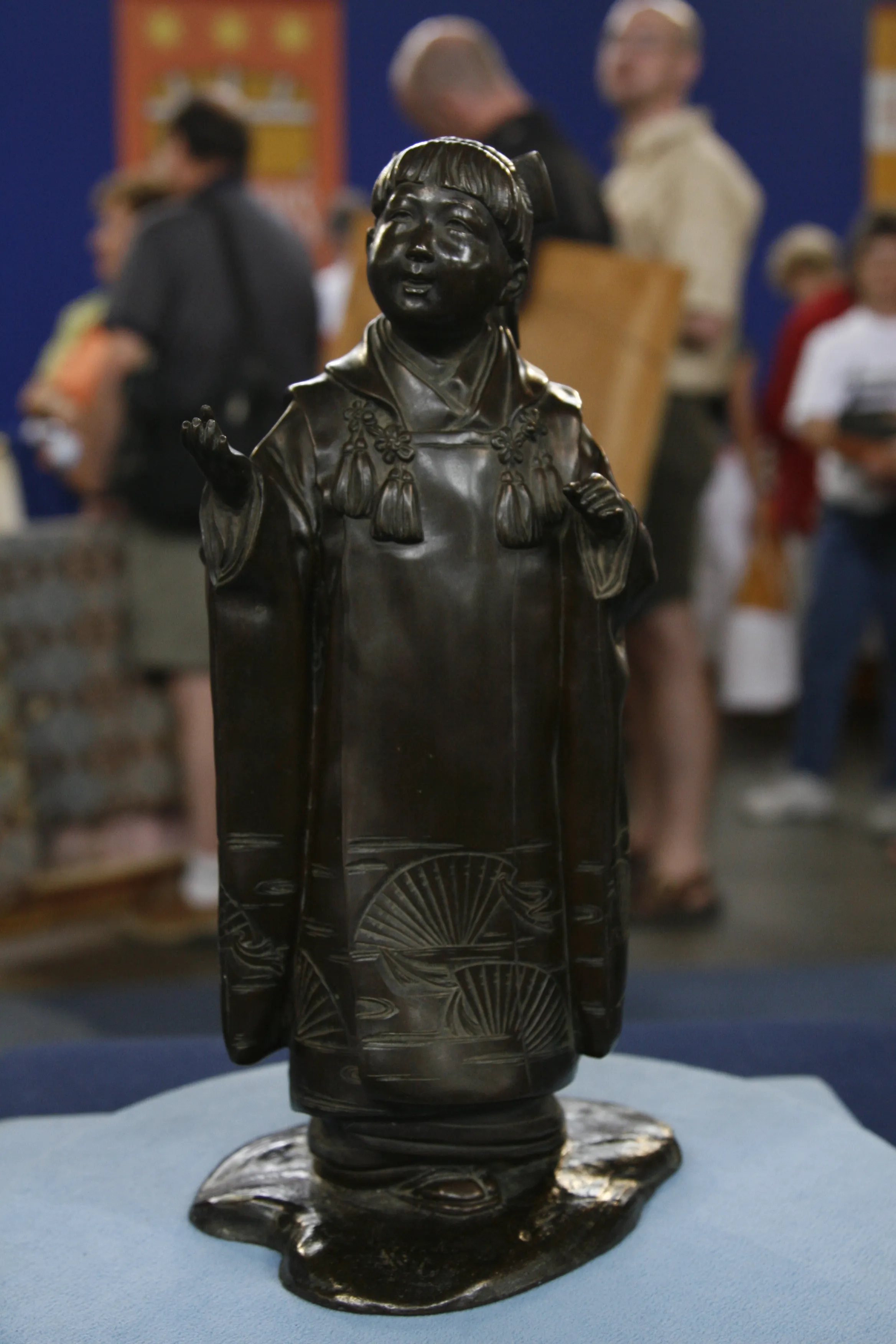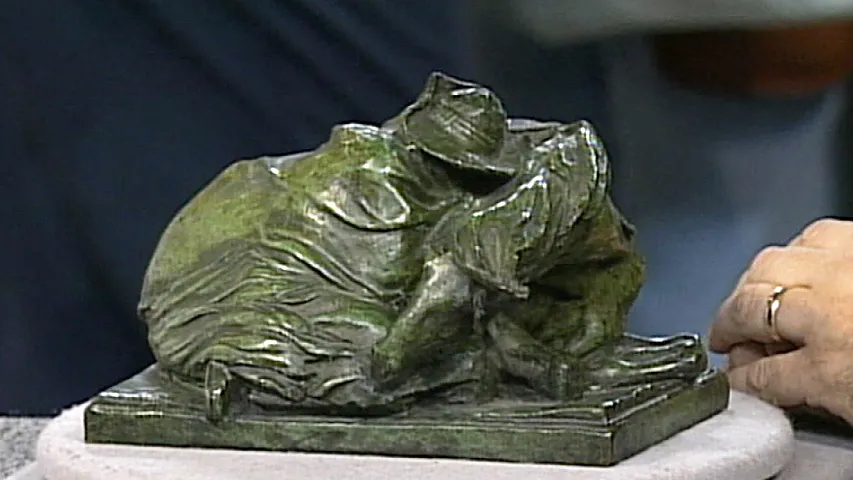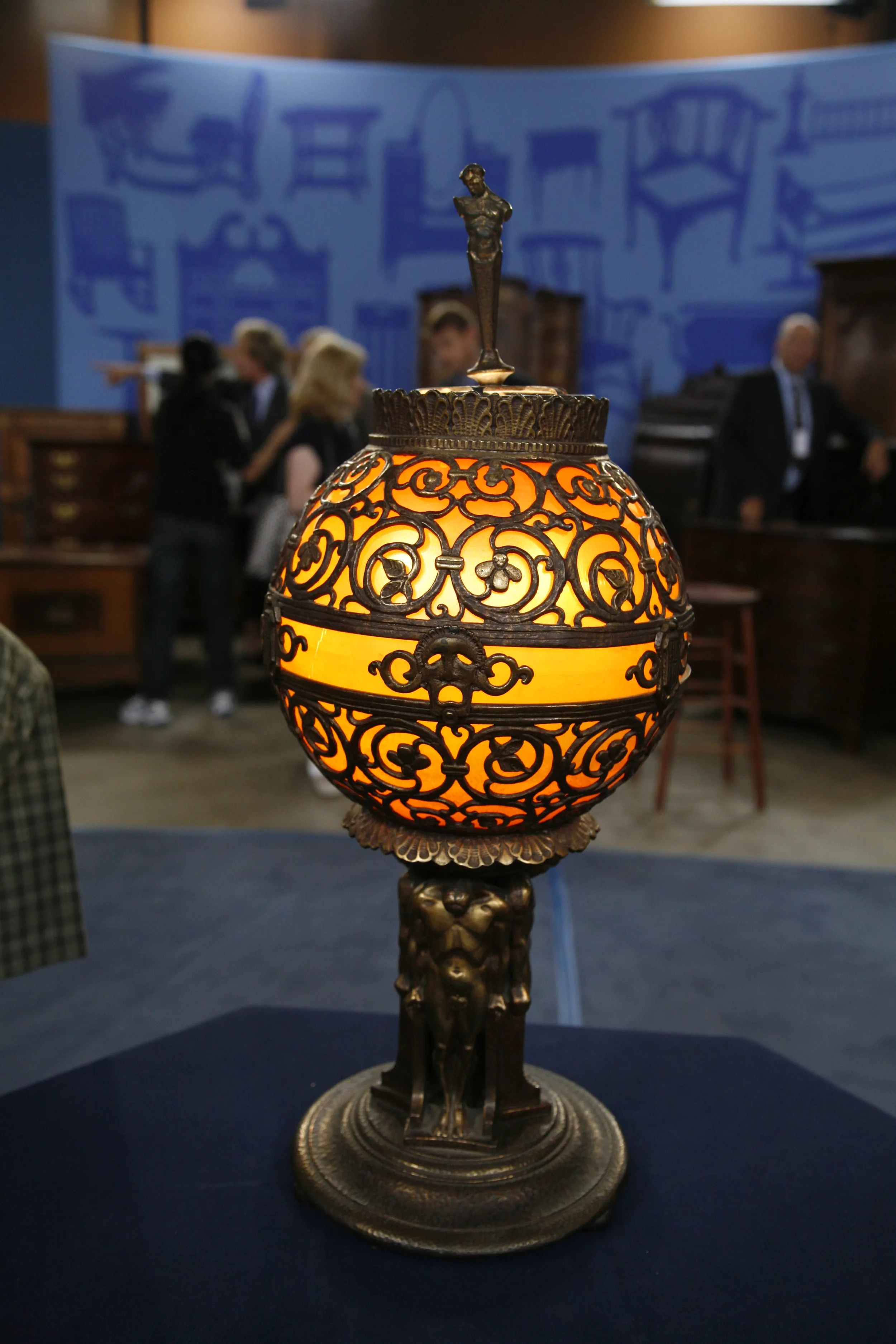GUEST: My grandfather was adopted by a fairly wealthy couple that traveled all around the world who gave it to him after... he inherited it, and it's just gone down the family line. I've had it for maybe a year. It's just been in my house, so...
APPRAISER: And can I ask you where in your house it is?
GUEST: Well, you can see it's dusty.
APPRAISER: That's why I'm asking.
GUEST: So it's just been on the mantel.
APPRAISER: Uh-huh.
GUEST: And I haven't really done any research on it.
APPRAISER: Uh-huh.
GUEST: So...
APPRAISER: Well, it's very clear, because it's signed right over here, "Barye," that it's Antoine-Louis Barye, who was a very famous French sculptor in the middle part of the 19th century. And we see lots and lots and lots of these at the Antiques Roadshow.
GUEST: Oh.
APPRAISER: Every Roadshow we see at least two or three Baryes.
GUEST: Mm-hmm.
APPRAISER: Yours is particularly nice; it's an interesting one. The title of it is “Marching Tiger”. And Barye was the first of what was called the animalier sculptors, sculptors who specialized in the depiction of animals. And there are a dozen artists who came after him who specialized in animal sculptures, but he's the premier one. And he did every kind of animal. There's a lion devouring a crocodile. Some of them are pretty gruesome.
GUEST: Yeah.
APPRAISER: And they were very popular in the 19th century. There was a romantic idea about animals, and the purity and the truth of nature. And they've sort of fallen out of favor, since we like more warm and cuddly kinds of animals, and dogs and horses or whatever. And what's very nice about it is that it has a foundry mark. And that foundry mark is right here-- F. Barbedienne, and it says "fondeur" here, "foundry" in French. Barbedienne at this time was probably the most prominent foundry in France. And in France at this time, bronze production in these foundries was phenomenal in terms of the amount of detail. See where the stripes adjust in size there, and the clarity, the crispness of the casting, and just the subtleties. It's really beautifully done. What's so interesting about Barye is not only that he spawned a whole number of artists who worked in this animalier style, but he also spawned companies that made reproductions. And when I say we see these at every show, it's because we see them in various materials, primarily white metal or spelter that are made to look like bronze. And usually they're also called surmoulages, where they take an original Barye bronze and they make a recast or reproduction based on the original model.
GUEST: Mm-hmm.
APPRAISER: And that's what we see all the time.
GUEST: Yeah.
APPRAISER: What's nice about your piece is that it's actually from the period.
GUEST: Okay.
APPRAISER: And we can tell this with this little mark over here, the FB in gold, and that stands for Ferdinand Barbedienne. Barye died in 1875, and his estate sold the rights to reproduce these bronzes. You know, they're made in foundries, not necessarily in editions, but they were made. And what's nice is that we know that Barbedienne bought the rights in 1876, and then the rights were given to another foundry in 1892. So… this puts a very nice, firm cap on the date, and it makes it from the period right after his lifetime. Did you ever have it appraised?
GUEST: I know it was appraised in the 1950s, was the last time. And it appraised for $100.
APPRAISER: $100. In today's market, a retail price on this would probably be about $10,000.
GUEST: Oh, my gosh, really?
APPRAISER: Yeah.
GUEST: Wow. I had no idea what it was, and here I'm letting it collect dust. What would you insure it at?
APPRAISER: I would insure it for something in the $15,000 range.
